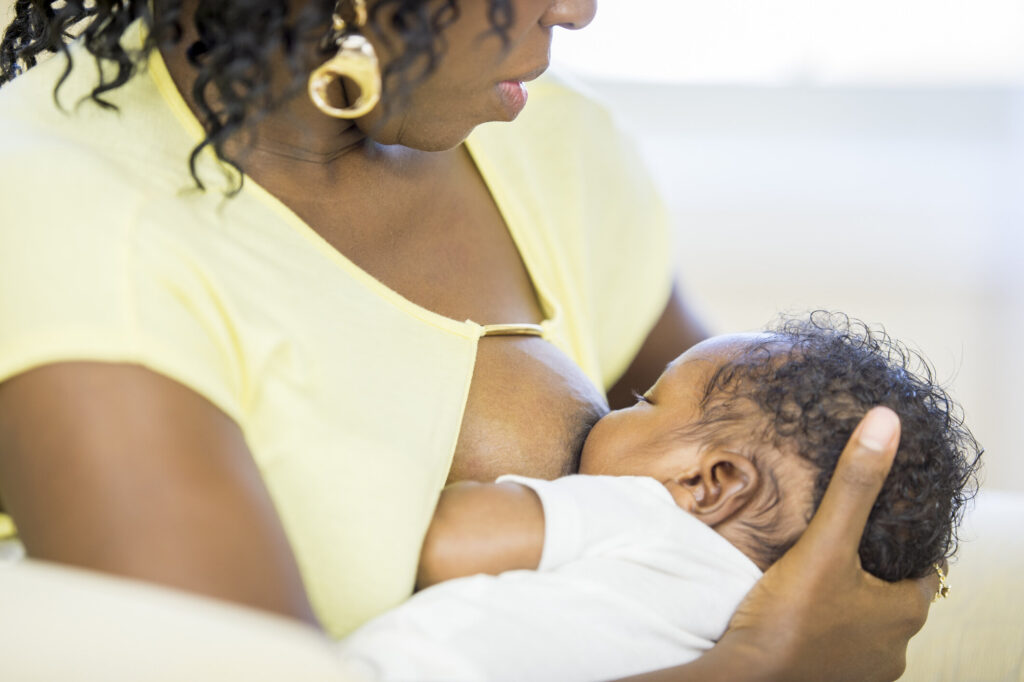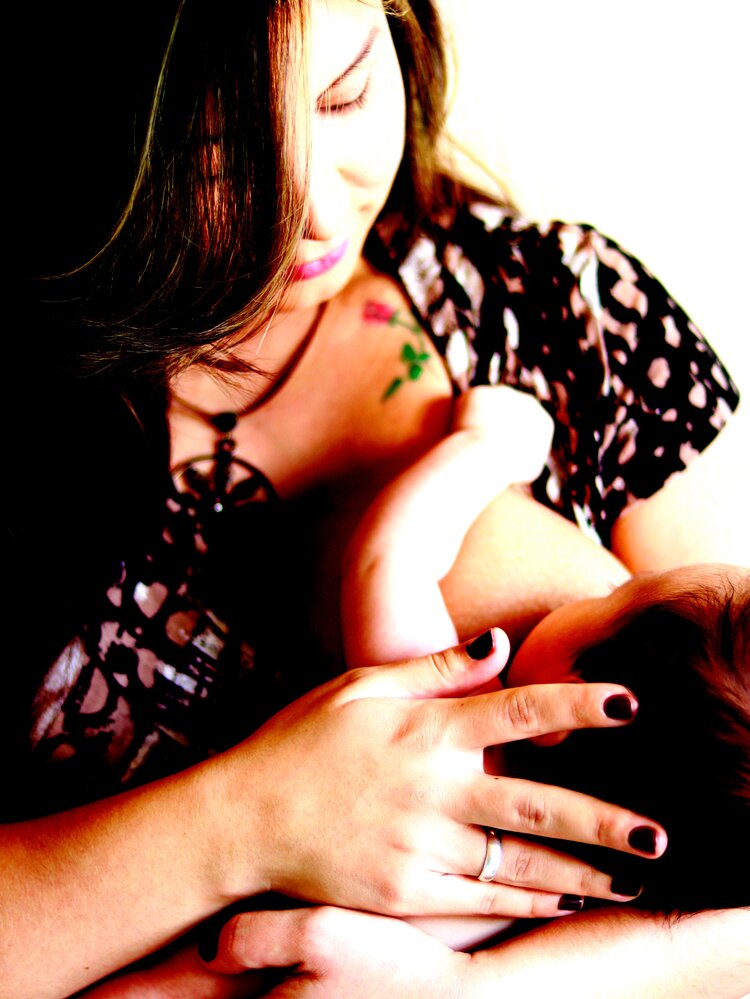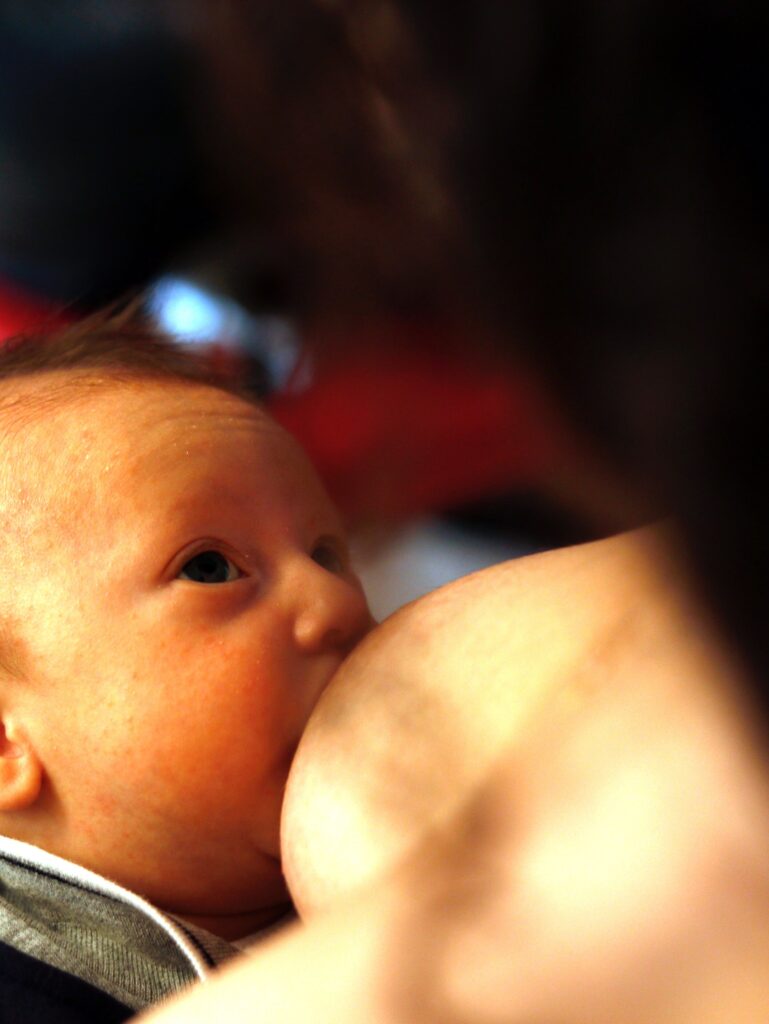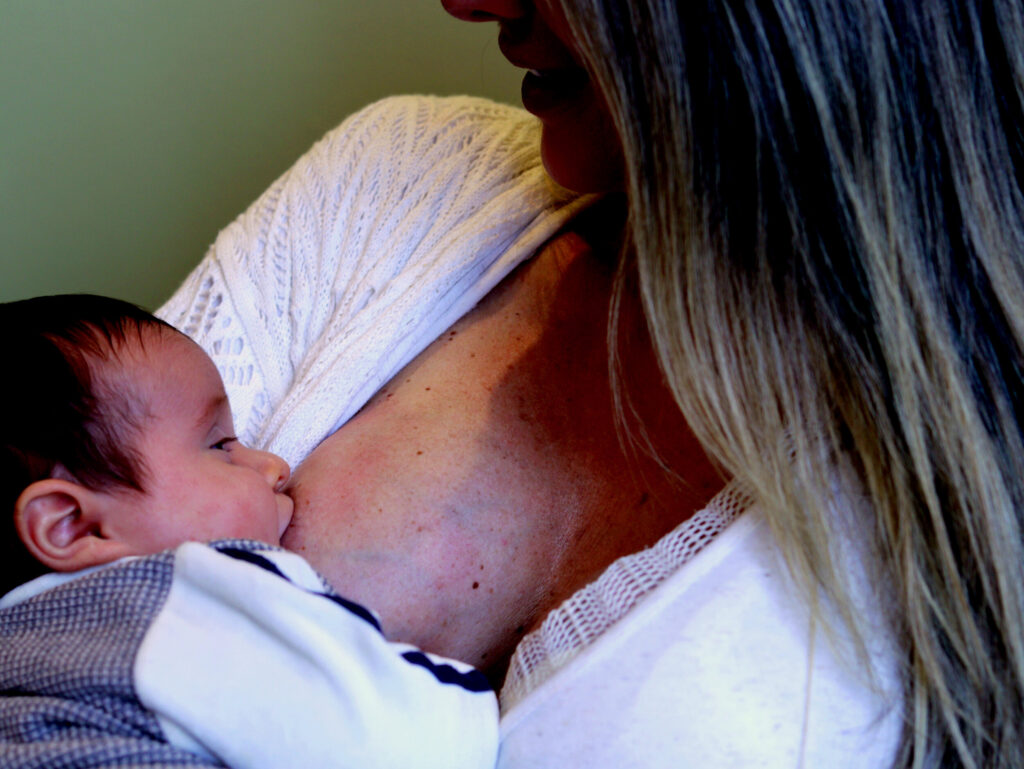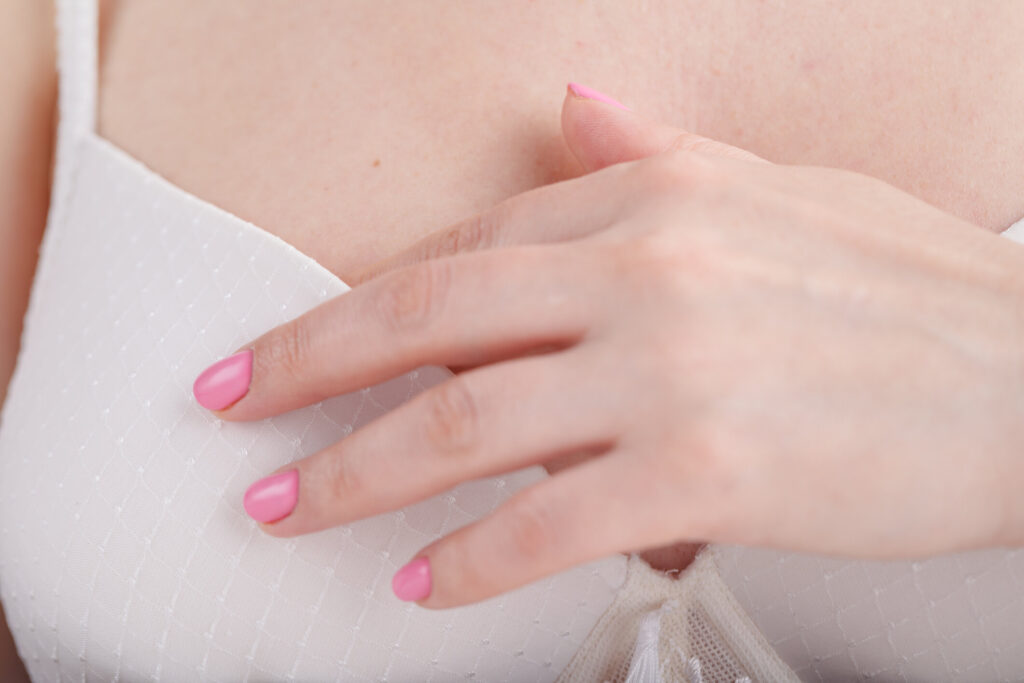
Breastfeeding is a learning process for mothers, babies, and the family as a whole. When newborns are first put to the breast, they sometimes have trouble opening their mouths wide enough to get a latch that is comfortable for moms. This reflects the small size of infants and changes over time as infants grow. Babies also may have trouble latching if mothers have breast swelling from engorgement or from other factors. If a baby persistently nurses without a wide, comfortable latch, nipple damage can develop.
The first step is to work with your health care team to help your baby and you learn what an appropriate latch feels like, so that he or she doesn’t injure your nipples.
Baby-led latch
Watch your baby – when she’s licking her lips, touching her fingers to her mouth, or turning her head from side to side, she’s thinking about eating. Get into a comfortable, well- supported position, and settle your baby where she’s close to your breast. Babies who are ready to eat will feel the nipple on their cheek, open their mouths, turn their heads into position, and latch. All you need to do is support her head and shoulders. If you feel discomfort after your baby has latched, adjust her position, and yours, until it’s comfortable for both of you. To release her from your breast, put your pinky finger in her mouth to break the suction.
Nipple damage
Nipple shape at the end of a feeding session can be a helpful clue about your baby’s latch. If the latch is appropriate, your nipple will be extended out from your breast and the same color as usual. If you are experiencing a poor latch, your nipples may be a different shape or color. For example, nipples can be pinched in a way that flattens them or even breaks the skin. When blood vessels have been pinched, they sometimes respond with a spasm that cuts off blood supply. This is called vasospasm, and it can cause changes in color. Some mothers notice their nipples turn pale, purple and/or very bright red. Others notice sharp, shooting pain deep in the breast. This condition is called vasospasm and often starts when the baby comes off the breast and the nipple gets cooler.
Some nursing moms develop nipple cracks, with redness and irritation. Irritant dermatitis can develop from irritation to your nipples from your baby’s mouth, your breast pump, or creams, lotions or soaps applied to your nipples. The main treatment is to apply a non-irritating moisturizer. Olive or coconut oil are inexpensive and edible options, so there’s not a concern if there’s a bit left when baby next goes to breast.
If the breaks in the skin are quite painful, or if there’s yellow crusting around the cracks, there may be a bacterial infection. The bacteria that cause this typically come from your baby’s nose, so it’s safe for him to keep breastfeeding. Call your provider and ask about prescribing Mupirocin or Bactroban.
Additionally, Kelly Mom offers guidance for healing from nipple damage, including:
- Breastfeed from the uninjured (or less injured) side first. Baby will tend to nurse more gently on the second side offered.
- Experiment with different breastfeeding positions to determine which is most comfortable.
- If breastfeeding is too painful, it is very important to express milk from the injured side to reduce the risk of mastitis and to maintain supply. If pumping is too painful, try hand expression. Read more in the BABY FEEDING section.

